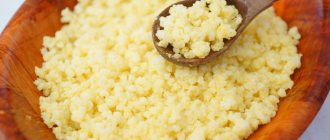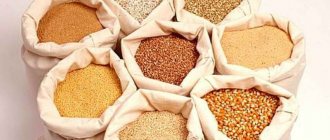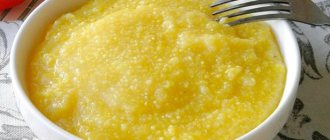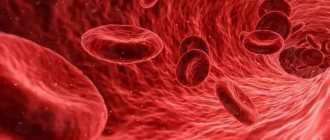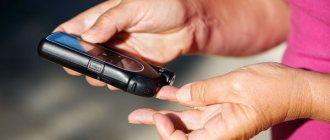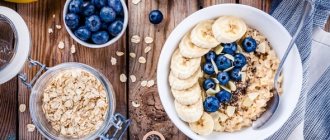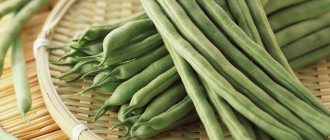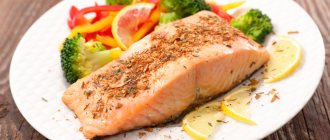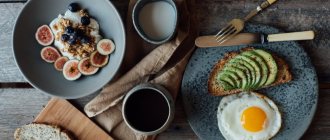Banana is a tasty and healthy exotic fruit containing many vitamins and minerals. However, diabetics should be extremely careful with this product, since it is characterized by a fairly high glycemic index and calorie content. This is especially important in type 2 diabetes, where diet plays a big role in maintaining optimal glucose levels and maintaining good health. So can you eat bananas if you have type 2 diabetes? Let's figure it out.
Beneficial features
Bananas have a positive effect on the human body due to their unique composition. They contain nutrients, vitamins and minerals. Vitamin B6 (pyridoxine) is very valuable, as it helps to cope with stressful situations and maintain a stable psycho-emotional state. Eating fruit increases the level of serotonin, the hormone of joy, and helps improve mood.
Bananas are good for type 2 diabetes, if you do not exceed the permissible amount. Indispensable for diabetics suffering from diseases of the liver, kidneys, biliary tract and cardiovascular insufficiency.
The fiber contained in bananas stimulates intestinal motility and reduces the absorption of carbohydrates. This prevents sudden spikes in blood sugar.
Bananas contain potassium and iron. These minerals support the functioning of the cardiovascular system and normalize blood pressure, which is extremely important for patients with diabetes . Iron increases hemoglobin levels, preventing the development of anemia.
Exotic fruits are fat-free, but quite high in calories (about 105 kcal) and contain a lot of sugar - about 16 g in 100 g. One banana contains about 2XE, which should definitely be taken into account when creating a menu.
What fruits are good for diabetics?
Eating fruit not only gives you a wonderful taste sensation, but also satisfies the feeling of hunger and provides the body with the necessary nutrients. However, many fruits are sweet, and if you have diabetes, you need to take this into account. Are fruits good for diabetes, and which ones exactly, will you find out in the article.
- Benefits of fruits for diabetes
- What fruits can you eat if you have diabetes?
- Fruits that are especially good for diabetes
- What fruits should you not eat if you have diabetes?
Benefits of fruits for diabetes
Fruits are rich in fiber, which is very beneficial for diabetes. High fiber foods slow down the absorption of sugar and control its levels in the blood. In addition, consuming enough fruit helps reduce the risk of obesity, strokes and heart attacks. Prevention of obesity is especially important in the case of type 2 diabetes, when metabolism is impaired and the risk of excess weight is high.
Fiber is found in almost all fruits, especially in those fruits that are eaten with the peel. Soluble fiber lowers blood glucose and bad cholesterol levels. And insoluble fiber helps improve bowel function.
Another beneficial property of fruits that is relevant for diabetes is their taste. With the help of fruits, you can satisfy your need for sweets by replacing sweets or other forbidden sweets with them.
Fruits contain many nutrients and vitamins that are not found in other foods. Therefore, they are certainly needed for diabetes, and one cannot completely abandon them. But there are some rules, following which you can reduce the risk and increase the benefits of eating fruits.
What fruits can you eat if you have diabetes?
In type 2 diabetes, when insulin deficiency is relative and does not require additional insulin, eating fruits is mandatory. They are very useful in the fight against excess weight and improving metabolism. But when choosing fruits for type 2 diabetes, you should focus on their calorie content and carbohydrate content.
If you have type 1 diabetes, you should avoid fruits that are high in sugar. The same recommendations should be followed for gestational diabetes. This type of diabetes occurs only during pregnancy and requires a special diet. Too sweet fruits (melon, watermelon, dates, bananas, pineapple) are prohibited because... may cause a rapid increase in blood sugar levels.
The glycemic index of foods will help you navigate when choosing fruits. This is an indicator of how quickly the product is digested and the sugar from it is absorbed into the blood, increasing glucose levels. The lower the index, the safer a particular fruit is.
- Is it possible to treat a cough with a banana: reviews of its use, interesting recipes for adults and children
For type 1 and gestational diabetes, it is recommended to consume fruits with a glycemic index within 40. These are citrus fruits (oranges, grapefruits), strawberries, cherries, apples, peaches, pears, plums, apricots. Products with a high index should be avoided, because the injected insulin will begin to act more slowly than the sugar that quickly enters the blood.
It is allowed to eat only fresh or frozen fruits, without additional cooking or preservation. Any compotes, jams, juices (especially store-bought ones) additionally contain sugar, and therefore are not included in the list of permitted foods for diabetes. This also applies to dried fruits, cocktails and smoothies.
Find out what other foods you can eat if you have diabetes.
Fruits that are especially good for diabetes
- Strawberry. Among berries, it is the leader in the content of vitamin C and other beneficial substances necessary for diabetes. One medium cup serving of strawberries provides 100% of your daily requirement for vitamin C. They also contain potassium, which helps regulate blood pressure, and fiber, which helps keep you fuller longer without raising your blood sugar. Eating strawberries slows down the absorption of simple carbohydrates in the body, so less insulin is needed to normalize blood sugar levels. One serving of strawberries contains approximately 15 grams of carbohydrates and 60 calories.
- Avocado. Not the most common fruit, but nevertheless, avocado is especially useful for diabetes, because. contains little sugar. At the same time, avocado contains a large amount of polyunsaturated fats, which are good for the heart and regulate cholesterol levels in the body. The daily norm is half a fruit, which contains 8 g of carbohydrates and 140 calories.
- Blackberry. Berries rich in antioxidants. Beneficial for the cardiovascular system, protect the body from oxidative processes. Raises the level of “good” cholesterol while reducing “bad” cholesterol. They contain a large amount of potassium and vitamin C. In terms of fiber content (8 g), they are leaders among most grain products. A 1-cup serving of blackberries contains 15 grams of carbohydrates and 70 calories.
- Apples. The most popular dietary fruit. It has a low glycemic index, but is rich in vitamins and contains a lot of fiber. They should be consumed with the peel, because... it contains a large amount of antioxidants and fiber. One medium apple contains 21 grams of carbohydrates and 77 calories. Many patients with diabetes mistakenly “lean” only on apples, considering this fruit to be safe. In this case, an unexpected increase in blood sugar levels may occur, because. Apples have a fairly high carbohydrate content. This must be taken into account when using them.
- Apricots. Rich in fiber and vitamin A. A serving of 4 medium apricots provides 50% of your daily requirement for vitamin A. One apricot contains 4 g of carbohydrates and 17 calories.
- Oranges. Just one orange a day provides 100% of your daily requirement for vitamin C. It is a low glycemic index fruit and contains 15 grams of carbohydrates and 62 calories. This fruit is also rich in potassium and folic acid, which normalize blood pressure.
With type 2 diabetes, it is especially important to monitor the amount of carbohydrates in the foods you eat. No more than 15 g of carbohydrates are allowed per serving - this rule also applies to fruits. Therefore, take into account the above data to calculate your fruit intake. If you have type 1 diabetes, you also need to count the amount of carbohydrates in your food in order to calculate or adjust the insulin dose you receive.
What fruits should you not eat if you have diabetes?
The standard “prohibited” lists usually indicate the sweetest fruits - bananas, persimmons, watermelon, melon, figs, etc. Let's look at the validity of some restrictions.
Watermelons. Watermelons are considered one of the dietary products that are often used for fasting days. But in case of diabetes, this cannot be done - watermelon has a high glycemic index. Therefore, its consumption quickly increases the level of glucose in the blood, causing a feeling of hunger after a while. This is dangerous for all types of diabetes, especially type 2. Because a strong feeling of hunger can lead to overeating and an overdose of carbohydrates.
There is no categorical ban on eating watermelons. But be sure to take into account the high sugar content and high glycemic index. When consuming this product, you should replace it with food of equal carbohydrate content. The recommended daily portion is up to 200 g of watermelon.
Bananas. Usually, people with diabetes are sure that they cannot eat bananas, because a ripe banana has a high glycemic index (GI = 65). But by eating half a banana, you can provide the body with a good portion of potassium and magnesium, which normalize blood pressure. If you monitor the amount of carbohydrates consumed and adjust the dose of insulin administered, then you can easily afford this tasty and healthy fruit at least sometimes.
Green banana is the most preferred. Its glycemic index is 30.
Dried fruits. Healthy and nutritious dried fruits are prohibited in case of diabetes. The fact is that dried fruits contain more sugar and carbohydrates than fresh fruits. Therefore, it is undesirable to use them. The only option is to soak them in cold water for 5-6 hours and then cook the compote. Naturally, sugar cannot be added to such a compote.
Dried melons, bananas, dates, papaya and mango are strictly prohibited for diabetes of any type.
Juices. Both freshly squeezed and store-bought juices are contraindicated for diabetic patients. Freshly squeezed juices contain more glucose than whole fruits. And store-bought drinks contain many prohibited and harmful additives. The only exception is homemade orange and apple juices without added sugar (no more than 100 ml).
Don't forget to exclude prohibited foods from your daily menu.
- Can you eat oranges if you have type 2 diabetes?
By following the above recommendations and taking all the necessary tests on time, people with diabetes of any type can indulge in eating fruits. Strict dosage and control are required to help protect against a sharp increase in blood sugar levels.
Harm
Despite all the beneficial properties of the fruit, it can be harmful to health.
- Bananas are contraindicated for obesity, as they contribute to excess weight gain, and this can cause complications of diabetes.
- If you have type 2 diabetes, you should limit your consumption of bananas, because... they contain quite a lot of easily digestible carbohydrates and sucrose, and this often leads to an increase in glucose levels. In type 1 diabetes, the surge in glucose can be compensated for by administering insulin.
- It is strictly forbidden to include fruit in the diet for moderate and severe decompensated diabetes. In this condition, even a slight increase in glucose leads to serious complications.
Rules for use in diabetes
Bananas have a high glycemic index, so diabetics should consume them with caution. But you shouldn’t completely exclude them from your diet. To avoid a jump in glucose from consumption, it is necessary to correctly combine them with other products and take into account the total daily diet.
- Eat bananas separately from other foods as a snack. It is not recommended to drink water or eat on an empty stomach in the morning. Do not use them for preparing desserts or other dishes.
- The maximum allowable amount is 1 fetus per day, and for type 2 diabetes - 1-2 per week. It is preferable to divide it into several steps.
- On the day of a banana snack, you should exclude other sweets, berries and fruits from your diet. To lower blood sugar and avoid a glucose spike, it is recommended to increase physical activity. In this case, carbohydrates will be processed into energy rather than accumulated in the body.
In what form is it available?
Bananas for diabetes can be eaten in different forms: fresh, boiled, stewed, frozen. The best option is to heat treat them. They should not be combined with other foods except sour fruits.
You should not eat bananas that are part of desserts prepared with syrup or sugar.
Recipes for diabetics:
Baked
- Peel the fruit and cut into slices.
- Place on a baking sheet greased with butter.
- Place in the oven for 20 minutes.
Salad
Prepare a fruit salad from sliced bananas, citrus fruits, and pineapple. Take fruits in arbitrary proportions.
Fruit salad is an excellent and healthy treat
Fruit juice
Extract the juice from one banana and mix it with pomegranate juice. Strain before use.
How to choose bananas if you have diabetes
When purchasing, preference should be given to fruits of medium ripeness. Green bananas contain a large amount of starch, which is poorly excreted from the body and can cause discomfort in the gastrointestinal tract. And overripe fruits have a high sugar content.
Despite the high glycemic index, calorie content and sugar content, patients with type 2 diabetes should not give up bananas. They will give taste pleasure, enrich the body with useful minerals and vitamins, and lift your spirits. To avoid a spike in glucose and deterioration in health, strictly follow the rules for consuming fruits and do not exceed the permissible daily dosage.
Rate article 4.0625 4.1 (8 ratings)
When not to
It is important to know that not all diabetics can eat bananas. They are contraindicated in severe forms of diabetes, when glucose levels are high and do not decrease. In this case, they can only worsen the person’s condition. In the stage of decompensation, any sweets are strictly contraindicated for diabetics.
It should be remembered that a banana is a fairly heavy fruit to digest, and diabetics do not need extra stress, since their metabolism is already impaired.
Overweight diabetics should not eat them. They are contraindicated if there are poorly healing trophic ulcers on the body.
It is not recommended to use them in case of vascular diseases, including atherosclerosis.
According to doctors, if you have diabetes of both the first and second types, and regardless of the stage and severity of the disease, you should not eat dried bananas, which have a high glycemic index - 74 (fresh 55) and are very high in calories - 340 kcal / 100 g.
